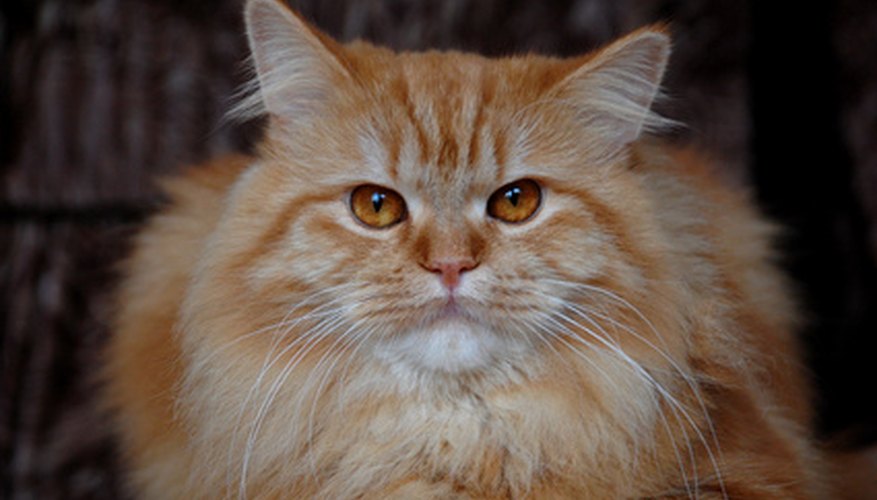Hairballs, also known as "trichobezoars," are a normal but unfortunate side effect of the feline grooming process. When cats ingest the loose hair removed during grooming, it sometimes builds up in the stomach rather than passing through the digestive tract successfully in the form of stool. If your cat is choking on a hairball, removing the blockage from the throat is the immediate first priority, followed soon after by a number of treatments designed to ensure the safe, quick and complete passage of the obstruction through the digestive track.
Hold the cat with one hand, and use the other hand to gently and slowly rub your cat's throat. This will help dislodge the hairball and either send it back down to the stomach or out the mouth. Be prepared for the hairball to exit as vomit.
Apply a small dab of petroleum jelly to your cat's paw if your cat has swallowed the hairball. Your cat will instinctively lick the petroleum jelly off, where it will head to the stomach and coat the hairball, making it easier for your cat to simply defecate the hairball. Petroleum jelly is not absorbed by the intestines, rendering it safe for your cat's digestive system.
- Hairballs, also known as "trichobezoars," are a normal but unfortunate side effect of the feline grooming process.
- Your cat will instinctively lick the petroleum jelly off, where it will head to the stomach and coat the hairball, making it easier for your cat to simply defecate the hairball.
Increase the fibre content in your cat's diet to help pass the hairball through the gastrointestinal tract. Choose a higher fibre food that is clearly designated as being formulated for the hairball dislodging and defecation.
Alternatively, use 1 tablespoon of canned pumpkin twice a day, mixed in with food, or grow a small planter of high-fibre cat grass near your cat's feeding dish.
Comb your cat's fur at least every other day to remove excess loose fur. Use a fine-toothed flea comb for short-haired cats, and a wide-toothed comb for longer-haired cats. Dispose of any removed fur immediately to prevent your cat from eating and swallowing what you've combed off of your pet.
TIP
Feed your cat a specially formulated cat food containing petroleum jelly if it refuses to lick off pure petroleum jelly.
WARNING
If your cat is coughing and hacking, and does not expel a hairball after treatment, this behaviour could be a sign of feline asthma. Check with a veterinarian to discuss symptoms and decide on a plan of action. Signs of serious hairball impaction in the stomach or intestines include vomiting of undigested food, constipation, diarrhoea and swelling of the abdomen. If your cat exhibits any of these symptoms, make an appointment with your veterinarian as soon as possible.
